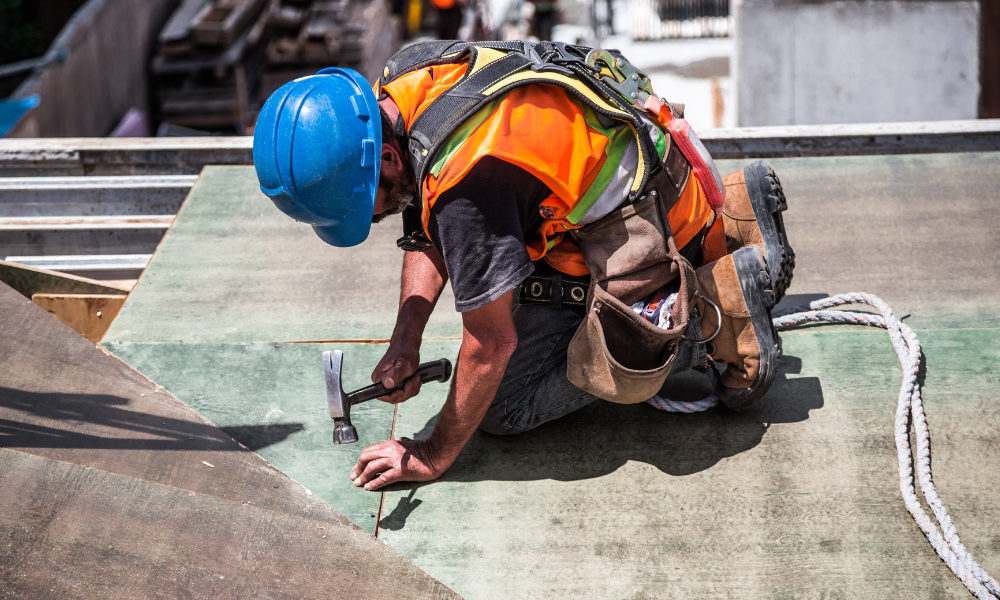
Who are lone workers?
The term lone worker refers to any person carrying out their professional activity without being seen or heard by others for a certain period of time. This can include employees working on construction sites, maintenance technicians in remote areas, in-home caregivers, or even night security guards.
Lone work isn’t defined solely by geography, but also by the lack of immediate social contact that would allow for rapid assistance in case of an accident or illness.
To be considered a lone worker, the situation does not have to be habitual or prolonged. A one-time task performed alone can also qualify as lone work.
Why is lone worker protection crucial?
Lone worker safety is a critical concern for employers. In the event of an incident, delayed response can have serious consequences on the worker’s health.
In fact, in many countries the law requires employers to take all necessary measures to protect their employees, and this includes lone workers. Specific rules apply to lone work in order to mitigate the risks linked to isolation.
Failing to ensure their safety can expose the company to significant legal risks, not to mention human and organizational consequences. Accidents can severely impact productivity and lead to costly interruptions. Thus, protecting lone workers is not only a moral and safety imperative but also a legal and financial necessity.
Which sectors are most affected by lone working?
Lone working is not limited to the industrial sector. It spans a wide range of industries. In agriculture, for example, workers are often alone in fields, making them naturally exposed to isolation risks.
In logistics, truck drivers spend long hours without direct contact with colleagues or other people. In the construction industry technicians might work alone on sparsely populated sites. In personal care services, in-home caregivers face isolation on a daily basis. Likewise, employees working night shifts, such as night guards, are often in lone working conditions.
Each sector presents its own specific risks: a worker falling from a roof, a road accident involving a delivery driver, an assault on a night guard: all are scenarios that demand anticipation and rapid response.
What are the employer’s legal obligations regarding lone work?
According to labor law, the employer must analyze lone working situations and adapt their risk prevention plan accordingly. Employers must ensure that lone workers have a means to signal danger. This may include implementing man down alarms (or safety monitoring device) and/or establishing clear alert protocols and providing specialized training.
Obligations go beyond simply providing equipment. Employers must also consider work organization, scheduling, mental workload, and the work environment. A comprehensive prevention strategy is essential to balance performance and protection.
How to protect lone workers
Identify risks specific to lone working
Lone worker protection starts with a risk assessment. Depending on the activity, work structure, and site layout, risks can vary significantly.
Some risks are directly related to isolation, like delayed response in the event of a heart attack or stroke. Others are linked to the nature of the activity or the organization of work and are exacerbated by isolation. For example, the risk of accidents in some industries might be increased by the supervisor’s absence, meaning unsafe practices might go unnoticed.
Reduce lone work through work organization and protocols
The most effective way to protect workers is to minimize lone working wherever possible. Proper work organization should aim to avoid isolated situations. By optimizing team arrangements and workplace layout, companies can significantly reduce the number of lone workers.
Technological solutions for lone worker safety
Connected technologies have greatly enhanced lone worker safety. Devices such as portable alert device (safety monitoring device, man down systems), fall sensors, non-GPS geolocation, and automated response platforms now allow for quick emergency response.
Some tools go further by integrating inactivity detection or hazard detection features like working at height or entering a restricted area. These innovations help shift workplace safety from reactive to preventive, using data to anticipate rather than just respond.
How to implement an effective lone worker safety policy
Implementing a lone worker protection policy is not just about buying a device. It’s a comprehensive approach that involves detailed risk analysis, communication with teams, thorough training, and continuous adaptation of safety measures.
It’s about not only identifying potential risks but also creating a work structure that reduces lone working situations. This may involve setting up specific protocols or even reconfiguring the workspace.
Involving employees in this process helps ensure better adoption of tools and valuable feedback to adjust protocols and select the most suitable safety systems. It’s also essential to test alert systems in real-life conditions to ensure their reliability.
Finally, companies should favor systems that prioritize prevention. Many common incidents can be avoided through clear procedures, regular training, and dedicated equipment. For instance, the Sysnav safety monitoring device is designed to detect dangers like working at height or unauthorized area entry.
Conclusion: protecting lone workers
Lone working is a growing reality in today’s companies. With digitalization, automation, and decentralized workplaces, the number of lone workers is likely to increase in the coming years.
That’s why companies must be fully aware of the challenges and prepare to secure their employees, whether they work on-site, on the road, or remotely.
More information about Sysnav Safety Monitoring Device.
